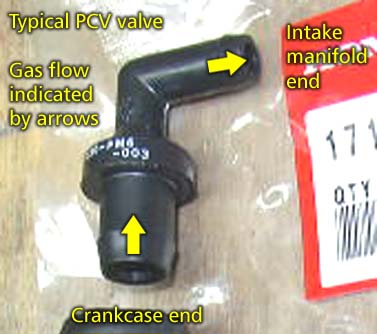
P053A Positive crankcase heater control circuit / open
Content
- P053A Positive crankcase heater control circuit / open
- OBD-II DTC Datasheet
- What does this mean?
- What is the severity of this DTC?
- What are some of the symptoms of the code?
- What are some of the common causes for the code?
- What are the steps to diagnose and troubleshoot a P053A?
- Related DTC discussions
- Need more help with the P053A code?
P053A Positive crankcase heater control circuit / open
OBD-II DTC Datasheet
Positive crankcase heater control loop / open
What does this mean?
This is a generic powertrain diagnostic trouble code (DTC) and is commonly applied to OBD-II vehicles. Car brands may include, but are not limited to, BMW, Mini, Jeep, Chrysler, Ford, etc.
PCV (forced crankcase ventilation) is technically a system designed to remove harmful fumes from the engine and also to prevent the release of these fumes into the atmosphere. This can also be done by using a manifold vacuum to suck vapor from the crankcase into the intake manifold. The crankcase vapors pass through the combustion chambers together with the fuel / air mixture to be burned. The PCV valve controls the circulation in the system, making it an efficient crankcase ventilation system as well as a contamination control device.
This PCV system has become the standard for all new cars since the 1960s, and many systems have been created over the years, but the basic function is the same. There are two main types of PCV systems: open and closed. Technically, however, both function in a similar way, as the closed system has been proven to be more effective at combating air pollution since its introduction in 1968.
With the help of a heater system / element, the PCV system is able to remove moisture, which is considered one of the main pollutants in the engine. When the engine is running, it usually generates heat that can burn off most of the moisture in the system. However, when it cools down, this is where condensation occurs. Motor oils contain special additives that trap the water molecule caused by moisture. Over time, however, it eventually exceeds its capacity and the water eats away at the metal parts of the engine, which damages it to some extent.
The ECM (Engine Control Module) is responsible for monitoring and adjusting the crankcase ventilation heater control circuit. If P053A is active, the ECM detects a general malfunction in the PCV heater control circuit and / or an open in the indicated circuit.
Example of a PCV valve: 
What is the severity of this DTC?
In this case, the severity is medium to high, so solving the problem is critical because if the PCV system fails due to sludge build-up and oil leakage, you could damage your engine to a certain extent. A plugged PCV valve due to carbon build-up will cause many other possible engine problems. The pressure will begin to build up, which can lead to failure of the gaskets and stuffing box.
What are some of the symptoms of the code?
Symptoms of the P053A diagnostic code may include:
- Excessive oil consumption
- Deposits in engine oil
- Engine misfire
- Reduced fuel economy
- Leaking engine oil
- A defective PCV valve can cause noise such as whistling, howling, or other low moans.
What are some of the common causes for the code?
Reasons for this P053A positive crankcase ventilation code may include:
- PCV valve stuck open
- A wiring problem causing an open / short / out of range in the crankcase ventilation heater control circuit.
- ECM (Engine Control Module) problem (such as internal short circuit, open circuit, etc.)
- Dirty built-in PCV air filter (possibly internal)
- Oil contamination of the electrical connector and / or harness causing electrical connection problems
- PCV heater defective
What are the steps to diagnose and troubleshoot a P053A?
The first step in the process of troubleshooting any problem is to review technical service bulletins (TSBs) for known problems with a particular vehicle.
Advanced diagnostic steps become very vehicle specific and may require appropriate advanced equipment and knowledge to be performed accurately. We outline the basic steps below, but refer to your vehicle / make / model / transmission repair manual for specific steps for your vehicle.
Basic step # 1
There are several ways to check if the PCV valve is working properly and you will decide which one is easier for you, however it is important that the engine idles no matter which method you use. There are two methods to check if the valve is working properly:
Method 1: Disconnect the PCV valve from the valve cap, leaving the hose intact, and then gently place your finger on the open end of the hose. If your valve is working properly, you will feel strong suction. Then try to shake the valve, and if it rattles, it means that nothing is preventing its passage. However, if there is no rattling sound coming from it, then it is damaged.
Method 2: Remove the cap from the oil filler hole in the corner of the valve, then place a stiff piece of paper over the hole. If your valve is working properly, the paper should press against the hole in seconds.
If you find that the valve is not working properly, it is not worth buying a replacement right away. Instead, try cleaning it with a little carburetor cleaner, especially in heavily soiled areas. Make sure that any discoloration and / or sticky deposits that are present have been removed, which may indicate a thorough cleaning of the valve.
Basic step # 2
Check the harness connected to the PCV circuit (s). Considering the fact that PCV systems are exposed to oil present in the system, one possible cause is oil contamination. If oil leaks on harnesses, wires and / or connectors, it can cause electrical problems because the oil can corrode critical wire insulation over time. So, if you see anything like this, be sure to repair it properly to ensure a good electrical connection in the positive control circuit of the crankcase ventilation heater.
This article is for informational purposes only and technical data and service bulletins for your specific vehicle should always take priority.
Related DTC discussions
- There are currently no related topics in our forums. Post a new topic on the forum now.
Need more help with the P053A code?
If you still need help regarding DTC P053A, post a question in the comments below this article.
NOTE. This information is provided for informational purposes only. It is not intended to be used as a repair recommendation and we are not responsible for any action you take on any vehicle. All information on this site is protected by copyright.
